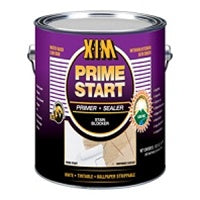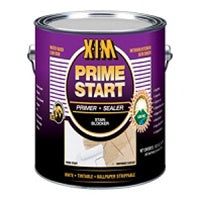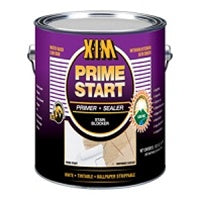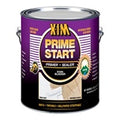Apply directly from the can. If thinning is desired, use XIM
Latex X-TenderTM at 2 oz per gallon. Mix or shake well before
application. It can be tinted with up to two ounces of universal
colorant per gallon.
and water. Clean spatters and spills immediately with warm water. If
it sets-up or dries use XIM GON or lacquer thinner.
Surface Preparation:
Surfaces must be clean and dry, free from dust, grease, wax,
oil, mildew, rust and other surface contaminants. The surface
should be a sound and stable. Remove all loose and peeling paint.
Clean with a strong detergent, rinse and allow to dry. For hard,
glossy surfaces, clean with solvent per SSPC-SP1. XIM GON, or
xylene are recommended. Do not use solvents that leave
an oily residue such as mineral spirits or turpentine. Moldy or
mildewed surfaces should be scrubbed with bleach, then
thoroughly rinsed with clean water and allowed to dry. Rotted
wood should be replaced. The moisture content of wood
should be below 15% at application. When priming woo
d knots or sap you may require initial spot priming with XIM’s
solvent based primers, X-SEAL or 400W NT.
Application:
Apply by synthetic fiber brush, ¼ inch synthetic roller or
by spraying. For airless spray, use .015 to .017 tip at
1600-1750 PSI. Apply at temperatures as low as 40◦F up to 100
◦F. It can be applied in high humidity conditions up t
o 90% relative humidity. Under standard conditions, 77◦F and
50% RH, it will dry to touch in about 30-45 minutes. Full cure
generally in 7-10 days. Thicker coats will take longer to
dry. It can be top-coated in 60 minutes, under normal conditions.
Coverage: 450 square feet per gallon, depending on
dry film thickness, method of application and type of surface.
Do not paint in direct sun or on hot surfaces. Stop application
two hours before a heavy dew or rain. If possible,
plan your painting to avoid rain and moisture for the first 24 hours
of curing. Painting flexible caulks or seams can result
in cracks in the paint film. Plan your job in advance and caulk seams
and edges after painting.
Note: Not recommended and do not use as a
primer over silicone caulks.




